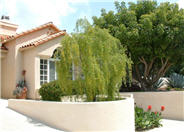
Common name:Mayten Tree
Botanical name:Maytenus boaria
The Mayten Tree is a slow growing tree that grows to 40' tall. It has weeping branches and dark green leaves. This tree can sucker in lawns and requires good drainage. It is drought tolerant.
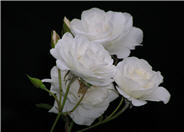
Common name:Iceberg Floribunda Rose
Botanical name:Rosa 'Iceberg'
This is a shrub rose (there are climbing varieties) with an abundance of fragrant, medium sized, white blooms. It is one of the most popular roses and very tough.
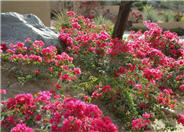
Common name:Bougainvillea, La Jolla
Botanical name:Bougainvillea 'La Jolla'
The large amount of flamboyant color on this species creates a wonderful accent in a garden. Varieties can be in bush or vine form; colors vary. Once established, they tend to be carefree. All varieties are susceptible to frost damage. 'La Jolla' blooms in bright red; it is a compact shrub and good for containers. It is senstive to frost and will die back hard but comes back in a number of weeks. Be carefeul of this in the Santa Ynez Valley.
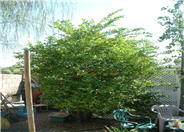
Common name:Sweet Orange cultivars
Botanical name:Citrus sinensis
This tree will grow 20'-30' high and 10'-15' wide; it produces sweet, tasty oranges. It has shiny green, leathery foliage and produces clusters of fragrant white flowers that bloom in the spring.
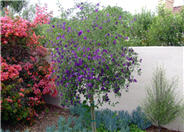
Common name:Blue Potato Bush
Botanical name:Lycianthes rantonnetii
This plant will grow 6 x 8' wide and produces beautiful purple flowers tha bloom all year. It does best in full sun and is very drought tolerant.
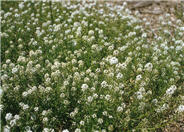
Common name:Sweet Alyssum
Botanical name:Lobularia maritima
Lobularia maritima is an annual. It is a low branching, trailing plant to 1' tall, with narrow or lance-shaped leaves .5"-2" long. There are tiny, four-petaled, white flowers crowded in clusters. This plant can be invasive in some areas, so use caution.
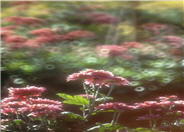
Common name:Pink Champagne Marguerite
Botanical name:Chrysanthemum frutescens 'Pink Champagne
Chrysanthemum frutescens is a perennial and an annual depending on the zone. The flowers are 1.5" to 2.5" and are pink. They do well in containers and need well-drained soil.
Designer:
Photographer: GardenSoft
Practice grass-cycling by leaving short grass clippings on lawns after mowing, so that nutrients and organic matter are returned to the soil.
Group plants in your garden according to their water needs (hydrozone).
Attract, or buy beneficial insects such as ladybugs and lacewings to control pest outbreaks in your garden.